Conifers are great additions to any garden where they will grow. They introduce elegance and structure to the landscape. When flowering perennials are done and have disappeared for the season, these stalwart workhorses mind the garden until spring. Certain conifers go even further by acting as living sculptures, as is the case with Alaska cedar (
Chamaecyparis nootkatensis).
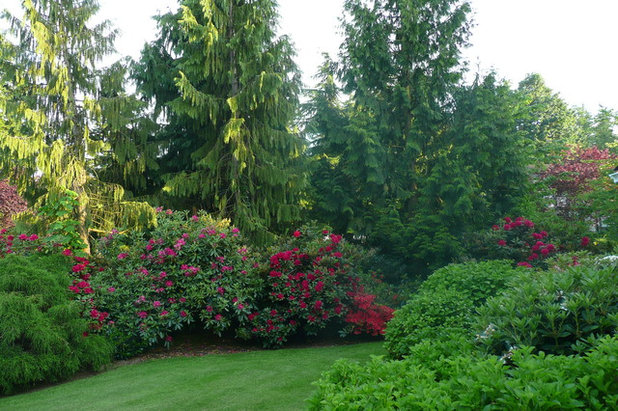 Botanical name: Chamaecyparis nootkatensisCommon names:
Botanical name: Chamaecyparis nootkatensisCommon names: Alaska cedar, Nootka false cypress, yellow cedar
Origin: The Pacific Northwest and north to Alaska
Where it will grow: Hardy to -30 degrees Fahrenheit (USDA zones 4 to 8; find your zone)
Water requirement: Average to somewhat dry soil; 1 inch of water per week until established
Light requirement: Full sun to partial shade
Mature size: Up to 60 feet tall and 30 feet wide, although many commonly available cultivars rarely grow taller than 30 feet
Benefits and tolerances: Resistant to deer, rabbits, insects and most diseases; adapts well to poor and thin soils; resistant to drought once established
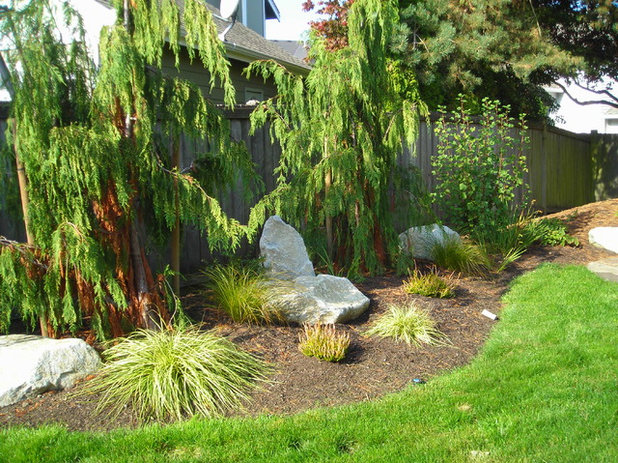
Greener Living Solutions, Inc
Seasonal interest: Inconspicuous flowers appear in midspring, followed by cones; this conifer provides invaluable structure and color in the winter garden.
When to plant: Spring or fall is best.
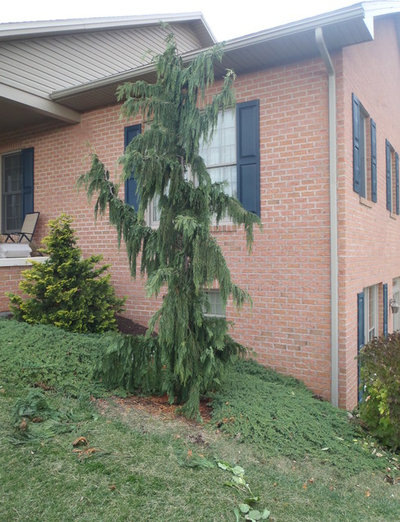
Weavers Landscape Company
Distinguishing traits. This conifer is unique in that it has tightly flattened foliage arranged on spreading branches with pointed tips. The most commonly available cultivars are considered desirable because of their slender, weeping form.
How to use it. Cultivars with weeping forms, such as ‘Pendula’ (shown here), are the most commonly available. They make a stunning focal point in the garden and can be used in place of garden sculpture.
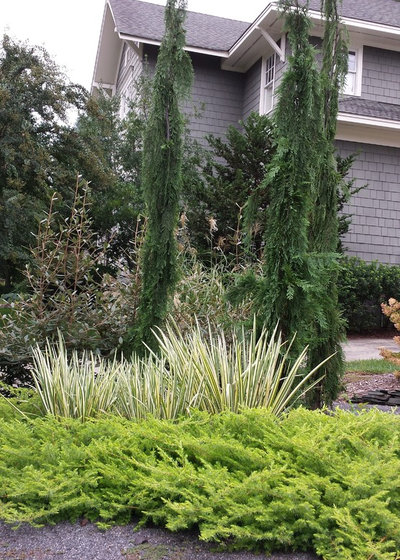
Jay Sifford Garden Design
‘Van den Akker’ is the narrowest and one of the most desirable cultivars. This tree grows to a height of 25 to 30 feet with a spread of only 1½ to 2 feet, excluding the low skirt, which can be easily removed. This form looks great in groups of three, especially when rising out of a mass of creeping junipers.
‘Green Arrow’,
another cultivar, is almost as narrow and can be planted with similar effect.
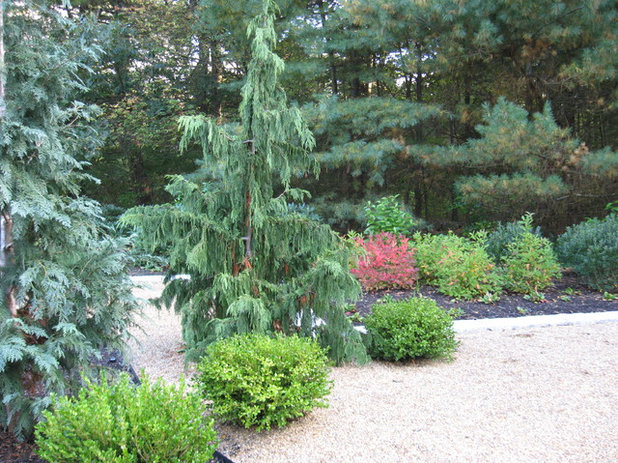
Mahoney's Garden Centers
Planting notes. Alaska cedar does best planted in well-draining soil sited in full sun, although partial shade is well tolerated and preferable in gardens of the U.S. South. Fertilization is generally not necessary. Consistent watering (1 inch of water per week) is appreciated until the tree is well established.
See more Houzz guides to trees





